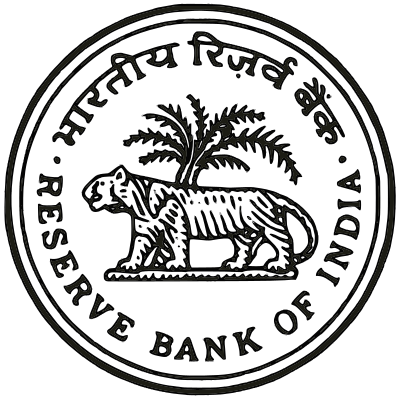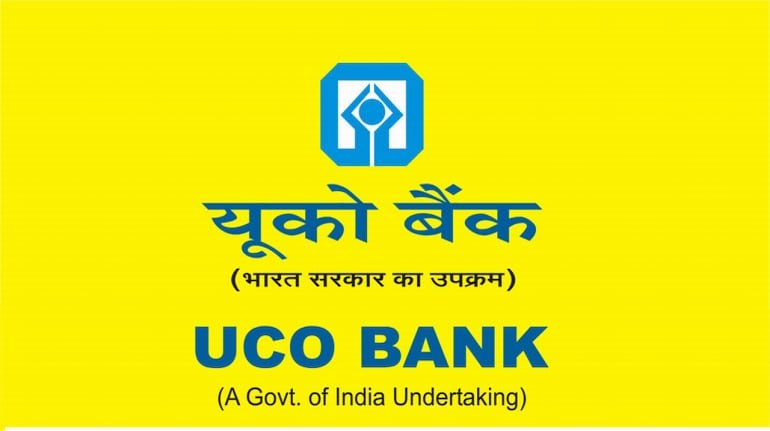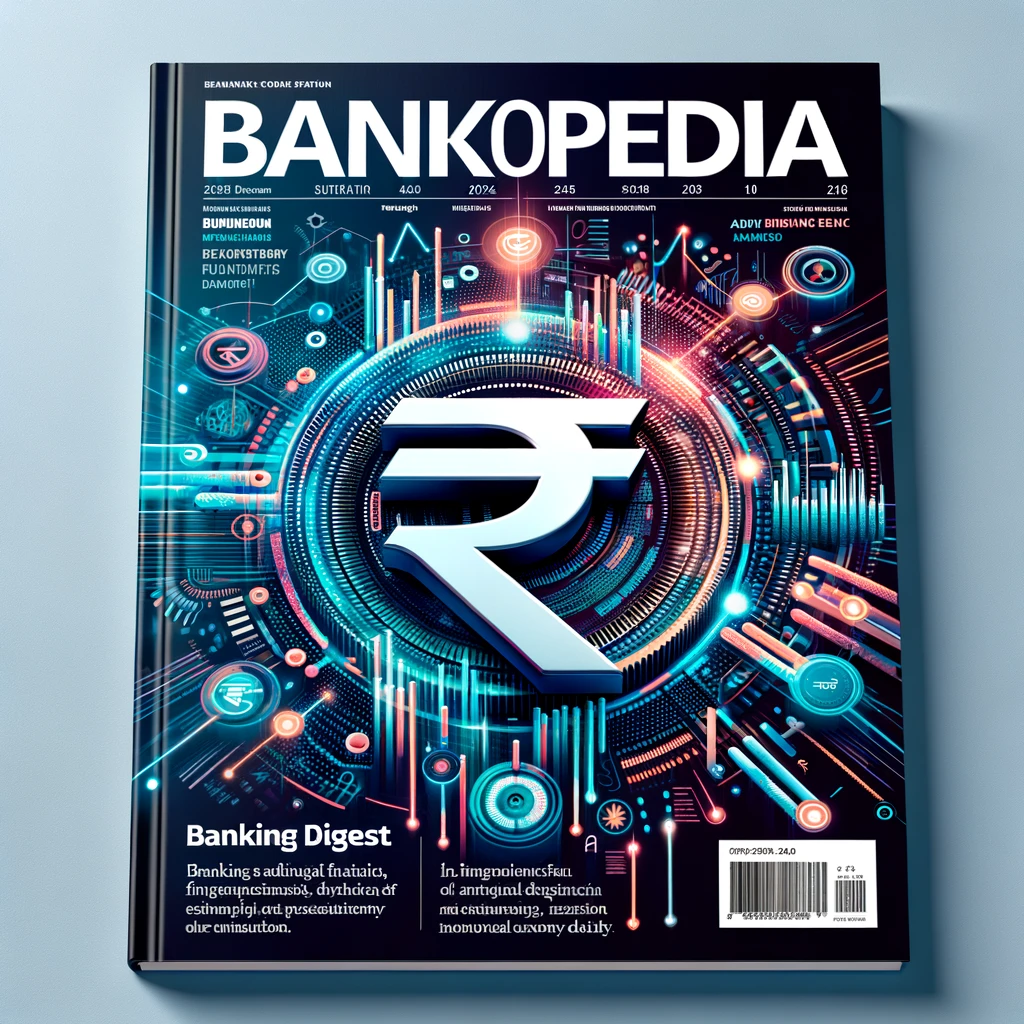Welcome to Daily Banking Digest, your premier source for the latest news and insights on April 30, 2024, focusing on banking, the economy, and finance. Our platform offers a comprehensive overview of the day’s most critical financial stories, market trends, and economic developments. Whether you’re a professional in the financial sector, an investor monitoring market movement, or someone interested in staying informed about the economic landscape, Daily Banking Digest provides reliable, up-to-date information.
Join our Telegram Channel for Daily PDF in your Inbox – Click Here
Table of Contents
Indian Corporate Sector’s Growth Slumps to Lowest Level Since Pandemic in Q4: Crisil
India Inc’s revenue growth slowed to 4-6% in Q4 FY24, marking the slowest quarterly growth since the post-pandemic recovery began. Despite the moderation, growth remains on a higher base compared to previous years.

Key Points:
Revenue Growth: – India Inc’s revenue growth slowed to 4-6% in Q4 FY24. – Only 12 out of 47 sectors monitored by Crisil are expected to show sequential and on-year improvement in revenue growth.
Sector Performance: – Consumer discretionary products and services led the growth, driven by automobiles, organized retail, and discretionary services. – Construction-linked sectors grew at a tepid pace due to a high base in Q4 FY23. – Cement sector revenue growth remained moderate despite steady demand due to price pressure.
Outlook: – Corporate revenue is estimated to have grown 8% in FY24. – Revenue growth is expected to improve to 9-10% in FY25, driven by sectors less dependent on commodities and catering to the domestic market. – Consumer discretionary segments will continue to grow despite easing of pent-up demand.
Margins: – Despite single-digit revenue growth, margins have increased consistently for four quarters. – India Inc is expected to log a 50-150 bps improvement in Ebitda margin in FY25 due to easing supply pressures and less volatile commodity prices. – Consumer staples, discretionary products, and industrial sectors are expected to see the highest margin expansion.
Interest Equalization Scheme Enhances Export Competitiveness: FIEO
The Federation of Indian Export Organisations (FIEO) has emphasized the importance of the interest equalisation scheme in enhancing the competitiveness of Indian exports, particularly for MSMEs. FIEO advocates for higher subvention rates, citing the higher interest rates in India compared to competitor countries. The scheme’s relevance has increased due to extended credit periods requested by buyers and increased credit needs for exporters amid rising freight costs.

Key Points:
Interest Equalisation Scheme:
- Provides subsidized interest rates to exporters of 410 identified products and MSMEs.
- Banks are reimbursed by the government for lower interest earnings.
- Scheme has been extended several times, with the current extension expiring on June 30, 2024.
FIEO’s Position:
- Scheme provides much-needed competitiveness to exports, especially for MSMEs.
- Interest rates in India are significantly higher than in competitor countries.
- Subvention rates should be increased to 5% for MSME manufacturers and 3% for 410 tariff lines.
Relevance of Scheme:
- Buyers are requesting longer credit periods due to demand slowdown.
- Exporters need larger credit due to increased sea and air freight costs.
PFRDA Enhances Transparency in Retirement Planning Rule-Making
The Pension Fund Regulatory and Development Authority (PFRDA) has implemented a new mechanism for creating and reviewing regulations, enhancing transparency and certainty in the rule-making process. This mechanism includes economic analysis of proposed regulations, establishment of a Regulations Advisory Committee (RAC), and public consultations.

Key Points:
Economic Analysis:
- PFRDA will conduct economic analysis of proposed regulations to assess their direct and indirect costs and benefits.
- The analysis will consider the impact on subscribers, the economy, and society.
- It will also evaluate how the regulations align with the objectives of the Act and the cost of not implementing them.
Regulations Advisory Committee (RAC):
- PFRDA has established a RAC to provide recommendations on proposed regulations and amendments.
- The RAC consists of a Wholetime Member of PFRDA, independent external experts, and an executive director of PFRDA.
- The RAC’s recommendations will be considered by the Pension Advisory Committee (PAC) and PFRDA.
Public Consultations:
- PFRDA will provide a minimum of 30 days for public comments on proposed regulations.
- The regulator will publish a statement of the problem addressed by the regulations and a draft of the proposed regulations on its website.
Budget Speech Announcement:
- Finance Minister Nirmala Sitharaman announced in the 2023 budget speech that financial sector regulators would conduct a comprehensive review of existing regulations.
- The review will consider public and regulated entity suggestions and establish time limits for application decisions.
Monetary Policy Expectations Drive Stock Market Movements More Than Rate Announcements: RBI Study
Equity markets are primarily influenced by expectations of future monetary policy rather than immediate policy rate changes announced by the Reserve Bank. Regulatory and developmental measures accompanying monetary policy announcements also impact stock markets.

Key Points:
Impact of Monetary Policy Expectations: – Equity markets are more affected by changes in market expectations of future monetary policy than policy rate surprises.
Volatility on Announcement Day: – Volatility in equity markets on the day of policy announcements is influenced by both policy rate surprises and changes in expectations.
Decomposition of OIS Rates: – The analysis decomposes changes in Overnight Indexed Swap (OIS) rates into target (policy rate surprise) and path (expectations) factors.
Regulatory and Developmental Measures: – Monetary policy announcements often include regulatory and developmental measures that can impact markets.
Analysis Period: – The analysis covers the period from January 2014 to July 2022, starting with the adoption of a flexible inflation targeting regime in India.
Disclaimer: – The views expressed in the RBI Working Paper are those of the authors and not necessarily those of the Reserve Bank of India.
UCO Bank’s Net Profit Drops 9.5% in Q4 Due to Lower Operating Profit
UCO Bank reported a 9.5% decline in its standalone net profit to ₹525.77 crore for Q4FY24 due to a decrease in operating profit. However, the bank’s total income grew by 17.44% and its gross NPA ratio improved. The board approved a capital raising plan and recommended a dividend of ₹0.28 per share.

Key Points:
Net Profit: – Declined by 9.5% to ₹525.77 crore for Q4FY24.
Operating Profit: – Decreased to ₹1,272.87 crore from ₹1,357.05 crore in Q4FY23.
Total Income: – Grew by 17.44% to ₹6,984.61 crore.
Gross NPA Ratio: – Improved to 3.46% from 4.78% in Q4FY23.
Capital Raising Plan: – Approved by the board to raise around 400 crore shares through various modes.
Dividend: – Recommended a dividend of ₹0.28 per share for FY23.
India’s Currency Circulation: A Reflection of Robust Economic Growth
The steady increase in Currency in Circulation (CIC) in India over the past seven years indicates strong economic performance and a boom cycle. Despite the introduction of UPI for digital payments, CIC has grown significantly, reflecting the continued use of cash as a payment instrument. The correlation between CIC and economic growth is evident, with smaller economies having lower CIC volumes compared to larger economies. ATM withdrawal trends show growth in consumption spending, with five major hotspots emerging as centers of consumption. The report emphasizes the importance of a balanced payments ecosystem that includes both cash and digital payments for a consumption-driven economy like India.
Key Points
1. Currency in Circulation (CIC) – CIC has grown at a 15% CAGR over the past seven years, indicating strong economic performance. – CIC is closely linked to cash usage as a payment instrument.
2. Correlation between CIC and Economic Growth – CMS Cash Index (CCI) and HSBC India Composite Purchasing Managers Index (HSBC ICPMI) show a strong correlation. – Smaller economies have lower CIC volumes compared to larger economies.
3. ATM Withdrawal Trends – 14 out of 23 states and UTs witnessed growth in annual average ATM withdrawal in FY24. – Monthly average ATM cash withdrawals grew by 5.51% in FY24. – Karnataka, Delhi, and West Bengal had the highest annual average withdrawals per ATM.
4. Consumption Trends – Consumption is reaching the grassroots, while metros continue to hold sway. – Five major hotspots of consumption spending: Delhi, Uttar Pradesh, Tamil Nadu, Karnataka, and West Bengal.
5. Importance of Balanced Payments Ecosystem – Cash payments complement digital payments in a consumption-driven economy. – A balanced ecosystem is essential for overall economic health.
6. Top Retail Sectors with High Consumption Growth – FY24: Media & entertainment, FMCG, railway, aviation, and durables. – FY23: Petroleum, media and entertainment, railway, aviation, and footwear.
Private Banks Conclude FY24 with Robust Performance; Prioritizing Margins and Profitability in FY25
Private banks in India reported strong earnings in Q4 FY24, driven by robust loan growth and a pickup in deposit growth. However, margins remained under pressure due to elevated costs and higher risk weights. Banks are focusing on maintaining profitability ratios, managing slippages, and improving asset quality.
Key Points:
Loan Growth: – Led by retail, unsecured, and small and mid-corporate segments – Some signs of a pick in private capex going into FY25
Deposit Growth: – Momentum expected to sustain – Pressure on deposit accretion due to higher risk weights and elevated lending rates
Margins: – Flat to lower for most banks due to elevated cost of funds – Expected to normalize in the second half of FY25
Operating Costs: – Higher due to investments in technology and employee incentives – Maintaining and improving profitability ratios is a key focus area
Slippages: – Largely from the retail portfolio – Corporate slippages improved for most lenders
Asset Quality: – Smaller private banks seeing improvement in asset quality ratios – Banks monitoring and recalibrating retail portfolios based on risk parameters
Go First’s Assets Dwindle as Aircraft Depart
The Delhi High Court’s order to deregister and return 54 Go First planes to lessors has significantly reduced the airline’s value for creditors. The lack of planes makes it difficult to sell the airline as a going concern, potentially derailing the bankruptcy process. Lenders are now considering alternative recovery options, such as ongoing arbitration proceedings and a land parcel in Thane.

Key Points:
Court Order: – Delhi High Court ordered the deregistration and handover of 54 Go First planes to lessors. – The order came in response to a challenge by lessors seeking removal of moratorium on Go First’s assets.
Impact on Bankruptcy Process: – The lack of planes significantly reduces the airline’s value for creditors. – The ongoing bankruptcy process could be derailed without hopes of any revival.
Lenders’ Options: – Lenders are considering whether to continue the bankruptcy process or focus on other recovery options. – They are pinning hopes on ongoing arbitration proceedings in Singapore and a land parcel in Thane.
Arbitration Proceedings: – Lenders are pursuing arbitration proceedings against engine maker Pratt & Whitney, seeking over $1 billion for faulty engines. – Both bidders in the bankruptcy process have included future arbitration claims in their resolution plans.
Land Parcel: – Go First has a 94-acre land parcel in Thane, which could be worth around Rs 2,000 crore. – Lenders have taken symbolic possession of the land and are exploring development options.
Bidders’ Response: – EaseMyTrip and Sky One Aviation, the two bidders in the bankruptcy process, are reviewing the court order and evaluating adjustments to their offers. – Sky One Aviation believes it can revive the airline by leasing its own planes.
Creditors’ Claims: – Go First owes creditors over Rs 6,200 crore. – Central Bank of India, Bank of Baroda, and IDBI Bank are the secured creditors with the largest claims.
RBI Introduces Surveys on Inflation Expectations and Consumer Confidence to Inform Monetary Policy Decisions
The Reserve Bank of India (RBI) has introduced two new surveys, the ‘Inflation Expectations Survey of Households’ and the ‘Consumer Confidence Survey,’ to gather insights for its upcoming monetary policy review. These surveys will provide qualitative and quantitative data on inflation expectations, economic sentiment, and household spending patterns.

Key Points:
Inflation Expectations Survey of Households
- Gathers subjective evaluations on price movements and inflation based on individual consumption patterns.
- Conducted in 19 cities, including Guwahati, Hyderabad, Jaipur, Kolkata, Lucknow, and Thiruvananthapuram.
- Collects qualitative responses on price changes over the next three months and one year.
- Collects quantitative data on current, three-month ahead, and one-year ahead inflation rates.
Consumer Confidence Survey
- Gathers qualitative responses on household views on the general economic situation, employment scenario, price levels, household income, and spending.
- Conducted in 19 cities, including Ahmedabad, Bengaluru, Bhopal, Bhubaneswar, Chandigarh, Chennai, and Delhi.
- Provides insights into consumer sentiment and spending patterns.
Importance for Monetary Policy
- The results of these surveys are vital inputs for monetary policy decisions.
- They help the RBI assess inflation expectations, economic sentiment, and household spending patterns.
- This information informs the RBI’s decisions on interest rates and other monetary policy measures.
RBI Mandates Lenders to Align Lending Practices with Fair Practice Code
The Reserve Bank of India (RBI) has directed regulated entities to review their lending practices and adhere to fair practices in charging interest rates. The RBI identified unfair practices such as charging interest from the date of loan sanction rather than disbursement, charging interest from the cheque date instead of the actual disbursement date, and charging interest for the entire month even when the loan was disbursed or repaid during the month. The RBI emphasized the importance of fairness and transparency in charging interest and directed regulated entities to take corrective actions, including system-level changes.

Key Points:
- Unfair Practices in Charging Interest Rates:
- Charging interest from the date of loan sanction or execution instead of disbursement.
- Charging interest from the cheque date when the cheque was handed over to the customer later.
- Charging interest for the entire month even when the loan was disbursed or repaid during the month.
- Collecting one or more installments in advance but reckoning the full loan amount for charging interest.
- Fair Practices Code:
- Guidelines issued in 2003 advocate fairness and transparency in charging interest.
- Non-standard practices of charging interest rates are not in the spirit of fairness.
- RBI’s Directive:
- Regulated entities directed to review their practices regarding loan disbursement, interest application, and other charges.
- Corrective actions, including system-level changes, must be taken.
IDBI Bank Enlists ROC Support in Nominee Director Dispute with NTADCL
IDBI Bank has raised concerns with the Registrar of Companies (ROC) regarding the exclusion of its nominee directors from board meetings of New Tirupur Area Development Corporation Ltd (NTADCL) despite provisions in the Master Restructuring Agreement (MRA) allowing their retention until all dues are settled. The bank holds equity in NTADCL following a Corporate Debt Restructuring (CDR) in 2011.

Key Points:
- Loan Repayment: NTADCL has repaid outstanding loans to CDR lenders, except those to IL&FS.
- Equity Holding: Lenders, including IDBI Bank, still hold equity worth Rs. 86.30 crore in NTADCL’s share capital.
- Master Restructuring Agreement (MRA): The MRA allows lenders to appoint nominee directors on NTADCL’s board.
- Exclusion of Nominee Directors: NTADCL has excluded IDBI Bank and SBI’s nominee directors from board meetings, citing vacancy due to loan repayment.
- IDBI Bank’s Concerns: IDBI Bank asserts its right to retain nominee directors until all dues are cleared, as per the MRA, Articles of Association (AoA), and Companies Act, 2013.
- ROC Intervention: IDBI Bank has sought ROC’s intervention to address the exclusion of its nominee directors.
Digital Banking’s Popularity: A Costly Burden for Banks
India’s private banks are facing rising IT costs due to the surge in digital transactions. Banks are investing heavily in IT capabilities to manage the volume, prevent fraud, and ensure data security. The Reserve Bank of India (RBI) is monitoring banks’ IT investments to ensure they can handle the increasing digital workload.
Key Points:
IT Costs Rising: – Digital transactions are driving up IT costs for banks. – IT costs now account for a significant portion of operating expenses, up to 10% in some cases.
Ongoing IT Investment: – Banks are continuously investing in IT capabilities to keep up with the evolving digital landscape. – Investments span areas such as transaction processing, integration, analytics, and AI.
RBI’s Concerns: – RBI is concerned about banks’ ability to manage the volume and security of digital transactions. – Banks must invest in systems to prevent fraud and ensure data security.
Banker Responses: – Banks acknowledge the importance of IT investments and have established board-level committees to evaluate their capabilities. – IndusInd Bank incurs 8-10% of its total cost on IT. – Yes Bank’s IT expenditure has increased by 17% to Rs 1108 crore. – Axis Bank has invested in a new-gen technology architecture to manage digital transactions and ensure system resilience.
Finance Ministry Reviews Bombay High Court Ruling on PSB Restrictions in Issuing Look Out Circulars Against Willful Defaulters
The Finance Ministry is reviewing a Bombay High Court order that prohibits public sector banks from issuing look out circulars (LOCs) against wilful defaulters. The court ruled that the government’s grant of such powers to banks is unconstitutional and violates fundamental rights. The ministry will assess the order and determine its next course of action.
Key Points:
Bombay High Court Order: – Quashed the government’s grant of powers to public sector banks to issue LOCs against wilful defaulters. – Deemed the clause empowering banks to seek LOCs as unconstitutional and violative of fundamental rights.
Finance Ministry’s Response: – Aware of the court order and will conduct a detailed assessment. – Next course of action will be decided after studying the order.
Expert Commentary: – Former Financial Services Secretary D.K. Mittal criticized banks for issuing LOCs without thorough investigation. – Investigative agencies like the CBI conduct proper investigations before issuing LOCs. – Banks often hastily label borrowers as wilful defaulters, impacting their business prospects.
Voluntary Mediation Framework: – An expert committee recommended a voluntary mediation framework under the Insolvency and Bankruptcy Code (IBC). – Aims to provide a complementary mechanism for dispute resolution. – Maintains the timelines for existing insolvency resolution processes. – Establishes a dedicated insolvency mediation cell with an independent secretariat.
Exporters Seek Extension of Interest Equalization Scheme for Enhanced Competitiveness
Exporters are urging the government to extend the Interest Equalisation Scheme (IES), which provides loans to exporters at reduced interest rates, beyond its current expiration date of June 30. The scheme has been beneficial to small exporters, particularly MSMEs, by reducing their interest costs and enhancing their competitiveness in the global market.
Key Points:
1. Exporters’ Request for IES Extension: – Exporters are facing high interest rates and faltering exports, making the IES extension crucial for their survival.
2. IES Benefits for Exporters: – IES provides loans at reduced interest rates, making exports more competitive. – It is particularly beneficial for MSMEs, which face higher interest costs in India compared to other countries.
3. Government Assessment of IES: – The government is assessing the effectiveness of the IES before deciding on its extension.
4. FIEO’s Recommendations: – Increase interest subvention rates from 3% to 5% for manufacturers and MSMEs, and from 2% to 3% for 410 tariff lines. – Restore interest subvention to its original level of 5% and 3% to enhance export competitiveness.
5. Budgetary Allocation for IES: – The initial budgetary allocation of Rs 9,538 crore was insufficient, requiring an additional outlay of Rs 2,500 crore earlier this year.
SEBI Streamlines PPM Reporting for AIFs to Ease Compliance Burden
SEBI has implemented changes to streamline the private placement memorandum (PPM) filing process for alternative investment funds (AIFs). Certain PPM changes can now be submitted directly to SEBI, eliminating the need for merchant banker involvement. This move aims to reduce compliance costs for AIFs.
Key Points:
Changes Not Requiring Merchant Banker Filing:
- Changes in fund size
- Information related to affiliates
- Commitment period
- Key investment team of the manager
- Key management personnel of AIF
- Reduction in expense or fee charged to fund/investors
Other Changes Not Requiring Merchant Banker Filing:
- Changes in contact details of AIF, sponsor, manager, trustee, custodian, auditor, RTA, legal advisor
- Risk factors
- Track records of investment manager
G7 Nations Pledge to Phase Out Coal-Fired Power Plants by 2035
The G7 energy ministers have agreed to phase out coal-fired power plants by 2035, marking a significant step towards transitioning away from fossil fuels. This agreement aligns with the goals set by the COP28 climate summit and will accelerate investments in clean energy technologies.
Key Points:
- Agreement to Phase Out Coal: G7 energy ministers have agreed to shut down coal-fired power plants by 2035 at the latest.
- Historical Significance: The agreement is considered a historic step in the transition away from fossil fuels.
- COP28 Alignment: The agreement supports the goals of the COP28 climate summit, which called for a transition away from fossil fuels.
- Acceleration of Clean Energy Investments: The phase-out of coal will drive investments in clean energy technologies, particularly in Japan and the broader Asian coal economy.
- Italy’s Coal Production: Italy currently produces 4.7% of its electricity from coal-fired stations and plans to shut them down by 2025, except for Sardinia (2028).
- Germany and Japan’s Coal Reliance: Coal plays a significant role in Germany and Japan, with over 25% of electricity generated from coal in 2022.
- Previous G7 Commitment: In 2022, the G7 pledged to prioritize phasing out coal power generation but did not set a specific deadline.
IDFC First Bank Anticipates Capital Call in Fiscal Year 2025
IDFC First Bank CEO, V Vaidyanathan, discusses the bank’s strong performance and plans for the future. He highlights the bank’s growth in deposits, loan book, and profitability, while emphasizing its commitment to asset quality. Vaidyanathan also anticipates a capital call in FY25 and expects income growth to outpace expenses, leading to improved profitability.
Key Points
Deposit Growth – Deposits grew by 42% last year, reaching Rs 2 lakh crore. – 78% of deposits are retail, up from 27% five years ago.
Loan Book – Loan book is growing steadily, with a focus on responsible growth. – NPA (excluding infrastructure) is down to 1.55%, and net NPA is down to 0.4%.
Credit Cost Normalization – Credit cost has been well-controlled, with a gross NPA of 1.32% and a net NPA of 0.97%. – The bank is confident in maintaining its asset quality.
Unsecured Loans – The bank is cautious about unsecured loans, with personal credit constituting 15% of the loan book. – Gross NPA for unsecured loans is 1.5-1.6%, and net NPA is 0.5%.
Second Half Recovery – The bank expects a recovery in profitability in the second half of the year. – This is due to upfronting of costs related to first loss default guarantees.
Branch Expansion and Digital Onboarding – Deposit growth is driven by both branch expansion and digital onboarding. – The bank expects branches to grow at a slower pace than deposits.
New Businesses – The bank has launched several new businesses, including wealth management, gold loans, and prime home loans. – These businesses are expected to contribute to profitability in the future.
Capital Call – The bank anticipates a capital call in FY25 to strengthen its capital base and support growth.
FY25 Outlook – Profitability is expected to increase, with income growth outpacing expenses. – The bank plans to continue launching new products and enhancing its app.
India’s Ambitious Chipmaking Push to Fuel Semiconductor Industry Growth
The Indian government is planning a new semiconductor manufacturing package to supplement the existing Rs 76,000-crore incentives. The new package is expected to be larger than the previous one and will prioritize proposals that are in advanced stages of development. The government’s efforts are driven by the success of the December 2021 package and the aggressive approaches of other countries in attracting semiconductor investments.
Key Points:
1. New Semiconductor Manufacturing Package: – The government is working on a new package to support semiconductor manufacturing. – The package is expected to be larger than the previous Rs 76,000-crore incentive package. – The announcement will be made after a new government takes office.
2. Success of Previous Package: – The December 2021 package has been nearly exhausted due to the influx of investments. – The success of the package has inspired the government to develop a new one.
3. Aggressive Approaches of Other Countries: – Countries like the US and China have announced significantly larger packages for semiconductor investments. – India is facing competition from these countries in attracting semiconductor companies.
4. Fiscal Support for Semiconductor Fabricators: – The government provides fiscal support for up to 50% of a project’s cost to eligible display and semiconductor fabricators. – This support has nearly run out due to the recent influx of investments.
5. Recent Semiconductor Investments in India: – Micron established a Rs 22,500-crore testing and packaging unit in Gujarat in June 2023. – Tata Electronics, Tata, and CG Power have received approvals for projects totaling almost Rs 1.3 lakh crore.
6. New Proposals under Discussion: – The government has received new proposals that are at an advanced stage of discussions. – These proposals include a display fab unit proposal by Japanese Sharp and a Rs 90,000-crore investment plan by Israel’s Tower Semiconductors.
Access to Export Credit May Be Enhanced Despite Geopolitical Uncertainties
The Indian government is exploring ways to enhance export competitiveness amidst geopolitical tensions. The commerce and industry ministry is examining the export credit landscape to identify challenges and potential improvements. The goal is to provide exporters with access to financial resources and address bottlenecks in existing export credit mechanisms.
Key Points:
Export Credit Landscape:
- India provides pre- and post-shipment export credit to facilitate international trade.
- Exporters face difficulties in utilizing these facilities due to specific bottlenecks.
- The cost of export credit in India is higher than in competing countries, impacting export competitiveness.
Government Initiatives:
- The commerce and industry ministry is seeking details on exporters’ financial needs and challenges in accessing export credit.
- The ministry is examining best practices from other countries to improve the export credit landscape in India.
Export Credit Mechanisms:
- Export credit includes priority sector lending and interest subvention scheme.
- The interest subvention scheme provides subsidized bank credit to exporters of certain products and MSME exporters.
- Exporters are seeking an extension of the interest subvention scheme due to increased demand for longer credit periods and higher freight costs.
India’s Services Exports Projected to Reach $800 Billion by 2030: Goldman Sachs Report
Goldman Sachs predicts that India’s services exports will surge to $800 billion by 2030, bolstering the external sector and mitigating rupee volatility. This growth is driven by the country’s competitive advantage in high-value services and the rise of Global Capability Centres (GCCs).
Key Points:
1. Services Exports Growth: – Services exports projected to reach $800 billion by 2030, up from $340 billion in 2023. – Exports as a percentage of GDP expected to increase to 11% by 2030.
2. External Sector Resilience: – Increased services exports will reduce reliance on goods exports, making the external sector more resilient to supply-side shocks. – Current account deficit projected to decline to 1.1% of GDP by 2030.
3. High-Value Services Growth: – India’s high-value services, such as professional consulting, are expected to drive growth. – GCCs have played a significant role in this growth, with their number and revenue increasing substantially.
4. Global Market Share: – India’s share in global exports has increased to 4.6% in 2023. – The country has potential to gain further share in sectors such as insurance, finance, transport, and travel.
5. Favorable Scenario: – In a favorable scenario, services exports could reach $900 billion by 2030, with a current account deficit of 0.6% of GDP.
Government Scheme Fraud Prevention Saves Rs 3.35 Lakh Crore
The Indian government’s efforts to eliminate fraudulent beneficiaries from its food security, rural employment, and fuel subsidy programs have resulted in significant savings of approximately ₹3.35 lakh crore between FY18 and FY24. This has been achieved through the identification and cancellation of fake ration cards, LPG subsidy beneficiaries, MGNREGS beneficiaries, and PM Kisan beneficiaries.
Key Points:
Savings: – ₹3.35 lakh crore saved between FY18 and FY24 – ₹30,000 crore saved in FY24
Beneficiaries Removed: – 50.1 million fake ration cards cancelled – 41.3 million fake LPG subsidy beneficiaries struck off – 700,000 bogus MGNREGS beneficiaries removed – 17.3 million fake PM Kisan beneficiaries identified
Leakage Plugging: – Close collaboration with state governments – Use of technology to identify and eliminate leakages – Special drive to identify fertilizer subsidy leakages – Joint efforts to remove duplicate and fake beneficiaries from PM Kisan scheme
Impact on Direct Benefit Transfer: – 20.75% decline in DBT in FY24 – ₹5.65 lakh crore in subsidy and benefit transfers in FY24
Food Subsidy Reduction: – 33% decline in food subsidies to PDS beneficiaries – ₹1.27 lakh crore in food subsidies in FY24
Total Transfers: – ₹35.5 lakh crore transferred to beneficiaries since 2014
IFC’s Climate Finance Focus Drives Investment Surge in India, Exceeding $4 Billion
The International Finance Corporation (IFC) plans to significantly increase its investment in India, with a focus on climate finance, electric vehicles, and financial inclusion. India’s ambitious renewable energy and net zero goals make it an attractive destination for IFC’s investments.
Key Points:
Investment Increase: – IFC to invest over $4 billion in India in the current financial year, up from $1.3 billion two years ago.
Climate Finance Focus: – 41% of IFC’s investment in India is related to climate finance, with plans to increase this further.
Electric Vehicle Potential: – India has the potential to become a powerhouse in batteries and electric vehicles. – IFC has investments in Mahindra and Mahindra and Napino, a battery technology company.
Financial Inclusion and Infrastructure: – IFC emphasizes the importance of financial inclusion, digitalization, and infrastructure investments.
Equity Exposure: – 36% of IFC’s portfolio exposure to India is in equities, compared to 19% worldwide.
Geopolitical Challenges: – Geopolitical developments pose a challenge to the international economy and trade.
Interest Rate Concerns: – High interest rates add to geo-economic concerns and impact central bank rate trajectories.
Foreign Banks Request Flexibility in LEF Regulations for Nostro Accounts
Foreign lenders have requested flexibility in complying with the Reserve Bank of India’s Large Exposures Framework (LEF) to facilitate global transactions. Banks have specifically requested the exclusion of Nostro accounts from LEF calculations, as sporadic inflows meant for short-term payouts have led to breaches of exposure norms.
Key Points:
Nostro Account Exclusion Request: – Banks have requested the RBI to exclude Nostro accounts from LEF calculations. – Nostro accounts are used for international trade fund flows. – Inflows into Nostro accounts are currently considered as deposits under LEF, leading to exposure limit breaches.
LEF Exposure Limits: – The LEF limits a bank’s exposure to a single counterparty to 20% of its eligible capital base. – An additional 5% exposure is permitted in exceptional cases. – For connected counterparty groups, the exposure limit is 25%.
Increased Exposure Limits during COVID-19: – In May 2020, the RBI increased the exposure limit for connected counterparty groups to 30% to facilitate corporate funding. – The increased limit was applicable until June 2021.
Flexibility in Lending and Borrowing from Parent Banks: – Some foreign banks have requested flexibility in lending and borrowing from their parent organizations. – RBI regulations currently restrict such transactions to prevent contagion.
Government Considers Revising IBC to Address Climate Change Impacts
The Indian government is considering revisions to the Insolvency and Bankruptcy Code (IBC) to address environmental claims and liabilities of defaulting companies. This move aims to align the law with climate action goals and prepare for future challenges.
Key Points:
Environmental Claims in IBC:
- IBC currently treats environmental liabilities as ordinary trade liabilities.
- Experts suggest developing guidelines for special treatment of environmental claims.
Global Integration of Climate Action and Insolvency:
- A working group formed by the World Bank and other organizations is exploring the integration of climate action into insolvency processes.
Transition Risk and Insolvencies:
- Businesses face transition risk as countries move towards COP28 goals, potentially leading to insolvencies.
- Climate events can also trigger bankruptcies.
Debate on Rescuing or Liquidating Polluting Companies:
- Experts debate whether companies contributing to environmental damage should be rescued or liquidated through insolvency.
Embedding Environmental Claims in Law:
- Financial distress can lead to companies defaulting on environmental obligations.
- Claims around the environment need to be embedded in law.
Involvement of Environmental Bodies:
- Environmental bodies should be involved in the approval of insolvency plans to address climate change issues.
Balancing Environmental Concerns and Economic Imperatives:
- Regulators face the challenge of balancing environmental concerns with economic recovery.
- Nuanced policymaking and industry understanding are crucial.
Special Status for Environmental Liability:
- Government may consider giving special status to environmental liability to prevent its “white washing” through IBC.











